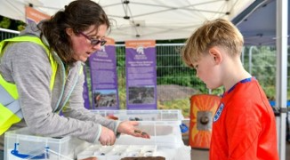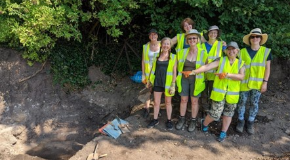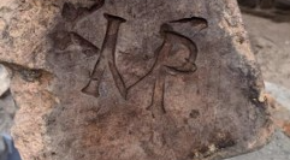Uncovering Roman Carlisle: Digging Deeper 2024 (SOLD OUT)
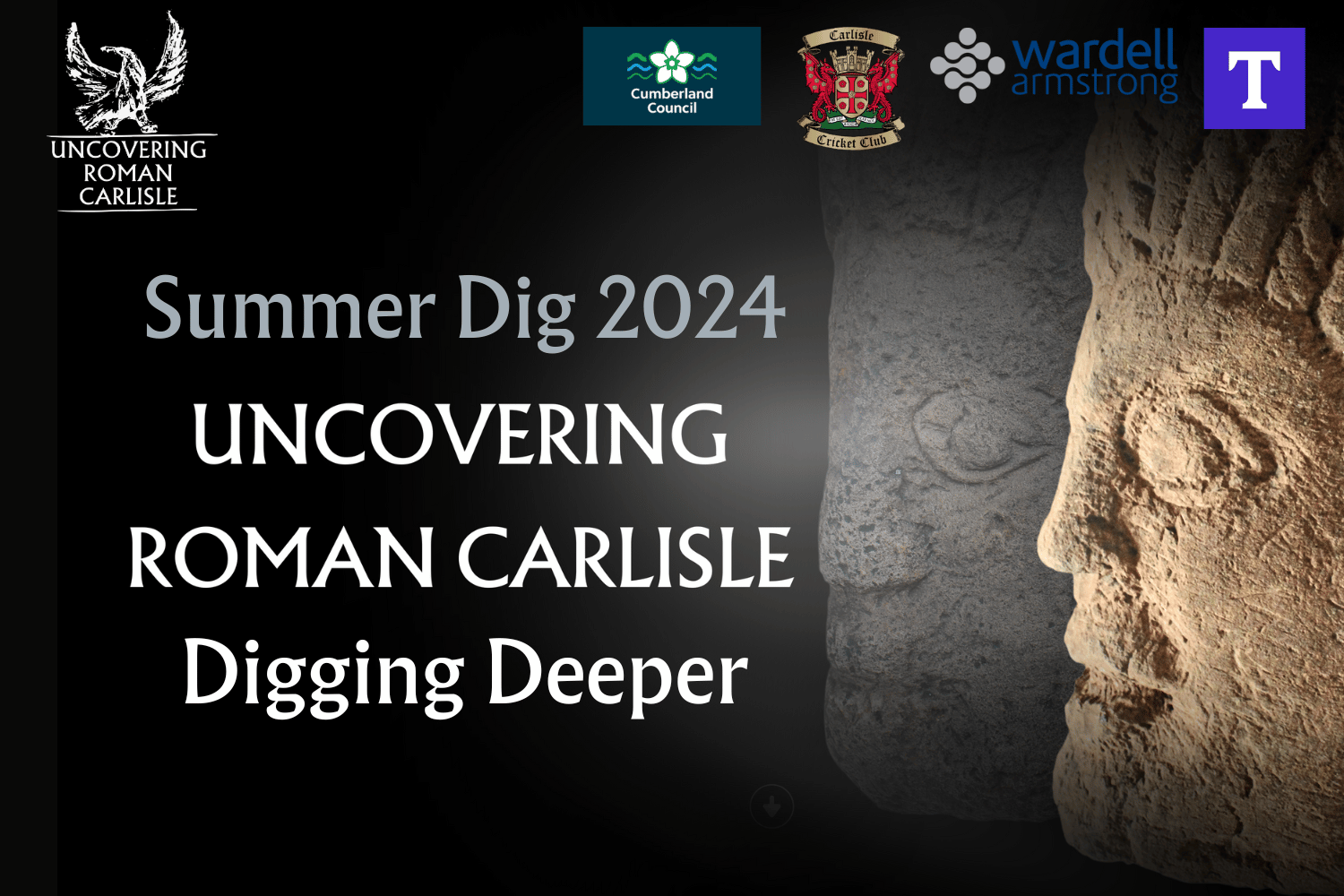
About
Join in with the archaeological excavations at Carlisle Cricket Club in 2024.
Visits from groups are welcomed with prior notice.
This project is funded by the UK government through the UK Shared Prosperity Fund.
A community excavation has been taking place on the site of Carlisle Cricket Club since 2017. The presence of a large Roman bathhouse on the site had been identified by archaeologists, when an evaluation had taken place ahead of redevelopment work. The initial discovery was quickly followed by additional investigatory excavation, directed by Frank Giecco during the autumn of that same year and paid for by Carlisle City Council and local businesses. These early phases of work successfully engaged volunteer diggers from the community. Indeed, the surprise discoveries caught the public imagination with such force that the idea to fund a community project on a larger scale quickly followed.
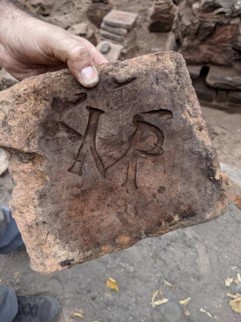
Bath houses, mansions and more
The Severan bathhouse was truly colossal in scale. Its northern, eastern and western limits were not reached within the excavation trenches. Only on its south side was the external wall found and a contemporary east-west aligned street uncovered. The building had walls 1.20m thick!
The stone used in the bathhouse buildings is similar in character to sandstone outcropping locally along the banks of the River Eden and the River Gelt, where known Roman quarries have
been located. Huge pieces of opus signinum and mortared superstructure were found to have fallen through the floors and between the hypocaust pilae stacks. Large quantities of hollow box flue tile, combed on the exterior, were recovered. Their internal surfaces were often blackened with soot. Several T-shaped iron clamps, used to affix the box tiles to the walls, were also recovered.
Very few roof tiles were found and the evidence of ceramic, nozzled tubes and ‘armchair voussoirs’ suggest the presence of two distinct styles of vaulted roof; with the pre Severan structure likely to have utilised the vaulted ribbing that used armchair voussoirs in its construction. A key difference between the stacks of square hypocaust tiles recovered from the Hadrianic and Severan bathhouses is that the Severan hypocaust tiles frequently bore stamps. Twenty-nine tiles with an identical ligatured ‘IMP’ stamp, standing for imperator (emperor) have been recovered.
Gem(s) of the city!
The Gems are coming from the drain of the high status Severan bathhouse with a possible Imperial connection. We now have 70 intaglio, nearly 300 glass beads and over 200 hair pins from our site that were lost in the third century.

We believe they are lost as a result of the hot, steamy and wet environment of a Roman bathhouse, gems might easily become detached from signet rings, or the entire ring become detached from the finger and washed down the drain. We don’t believe that there is any ritual significance to the deposition as was once suggested for the intaglio discovered at the roman baths at Bath.
The intaglio can be seen on many levels form pieces of art to connections to the individuals who owned them. It is noteworthy that very few have a obvious military connection as you might expect from a garrison town such as Carlisle but include deities such as fortuna, Bonus Eventus, Apollo and Ceres. They are found with beautiful hairpins which again suggests may of these jewels belonged to female rather than male owners.
There is a distinct style to a number of the red jasper intaglio may point to a jewellery workshop supplying the northern frontier zone based in Carlisle.
So why are we going back?

There is no tangible Roman heritage visible in the city, despite the significance of Carlisle as a one-time centre of the Roman world and its proximity to the Hadrian’s Wall world heritage site.
During this upcoming phase we hope to fix one of the southern corners of the Severan buildings and confirm the presence of a symmetrical second southern range mirroring what we discovered in the 2023 season. We also aim to find more evidence of the later development of the site and record more evidence of timber rebuilding on the site and better date this sequence of events. The new 2024 area will also allow further investigation of drainage system with the potential junction between the two main drains present in this area. On a final note we may be able to refine the chronology of the Hadrianic roadside activity and test our current hypothesis that all significant roadside activities come to an abrupt end in the early third century to resume in the late 3rd century/early 4th century.
Professionally, the excavation has added further evidence to the importance of Carlisle and its place at one time as the centre of the Roman Empire. More broadly, there has been international interest in the site and finds, making more people aware of the Museum, Carlisle as a Roman centre, and the Hadrian’s Wall world heritage site. We hope to add to this during our 5 weeks on site and follow up post-excavation study of the results.
Location
The site of the Carlisle Cricket Club occupies what was once an extremely important and well-defended location within the frontier system of Roman Britain and most northern city in the whole Roman empire. It lies on the north bank of the river Eden close to a bridge that connected two Roman forts.
The fort on the south side of the river, Luguvalium, was excavated between 1997 and 2001 and found to have been established under the Flavians. Roman control of this strategic river crossing was consolidated with the establishment of Uxelodunum, known today as Stanwix fort, on the high ground north of the river when the turf stretch of Hadrian’s Wall was built in the early 2nd century AD. Making this the most heavily defended location on Hadrian’s wall. The fort at Stanwix was eventually expanded to become the largest of all the forts on Hadrian’s Wall, eventually housing a 1000 strong cavalry regiment called the Ala Petriana.
This small piece of land, measuring just a few hectares, was protected on its northern side by Hadrian’s Wall and on all other sides by a sharp meander in the river Eden. It is very likely that this area was occupied by an extra-mural settlement associated with Stanwix fort, the community which lived in the settlement being closely associated with the Roman military and close to where Hadrian’s Wall crossed the river Eden at its confluence with the river Caldew.
Carlisle Cricket Club
Edenside, Carlisle, Cumbria CA3 9NS
This project is funded by the UK government through the UK Shared Prosperity Fund.
The UK Shared Prosperity Fund is a central pillar of the UK government’s Levelling Up agenda and provides £2.6 billion of funding for local investment by March 2025.
The Fund aims to improve pride in place and increase life chances across the UK investing in communities and place, supporting local business, and people and skills. For more information, visit https://www.gov.uk/government/publications/uk-shared-prosperity-fund-prospectus


